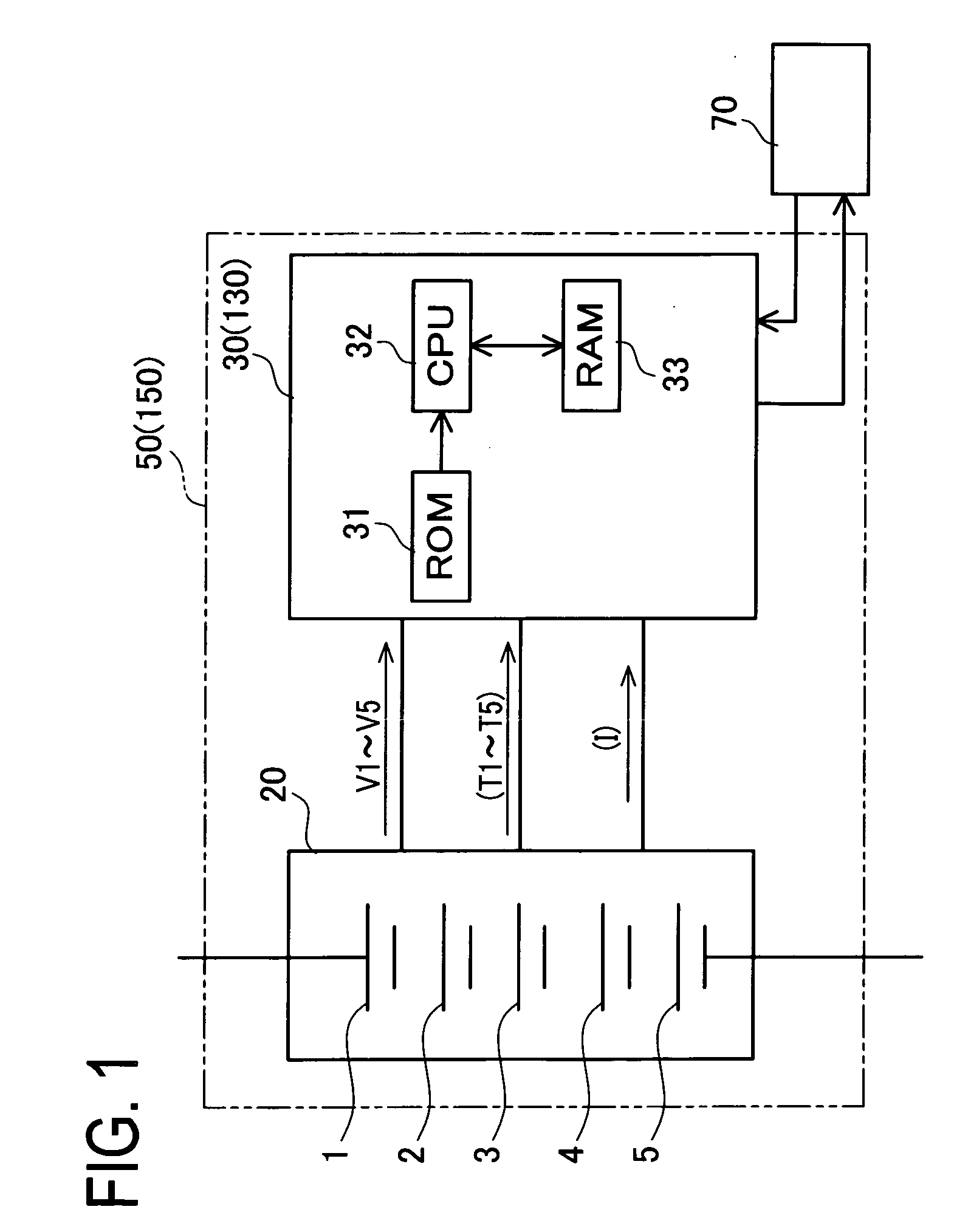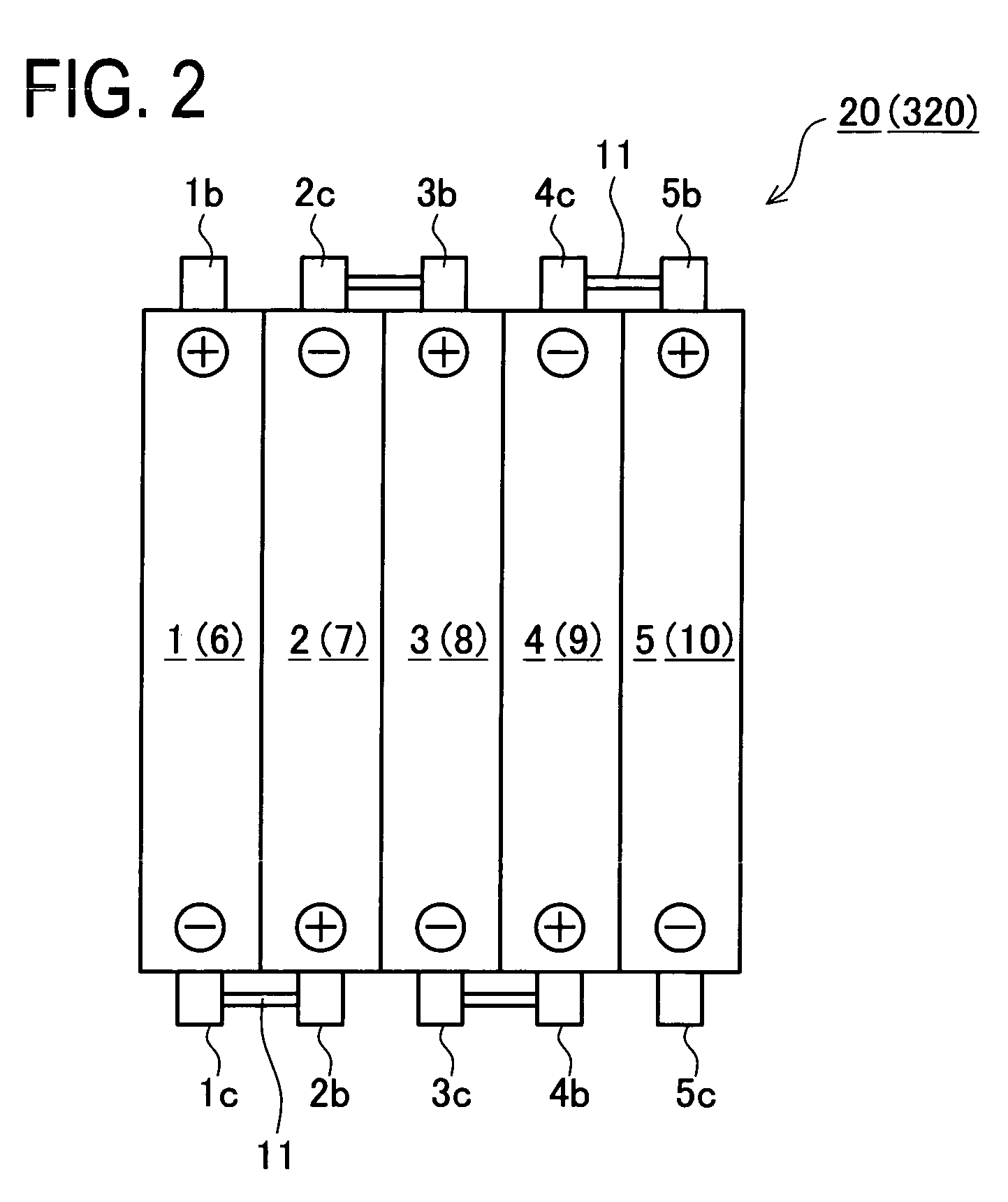Battery pack and battery pack producing method
a battery pack and battery technology, applied in the direction of secondary cell servicing/maintenance, cell components, maintenance/maintenance of primary cells, etc., can solve the problems of affecting the performance of the battery pack, and affecting the overall system performance, etc., to achieve the effect of reducing the battery voltage difference between the used secondary batteries, achieving similar battery voltage behavior, and sufficient performan
- Summary
- Abstract
- Description
- Claims
- Application Information
AI Technical Summary
Benefits of technology
Problems solved by technology
Method used
Image
Examples
embodiment 1
[0052]A detailed description of a first preferred embodiment of the present invention will now be given referring to the accompanying drawings.
[0053]A battery pack 50 equipped with a controller (hereinafter, “controller-equipped battery pack 50”) in this embodiment is first explained. The controller-equipped battery pack 50 includes, as shown in FIG. 1, a battery pack 20 and a battery controller 30. As shown in FIG. 2, the battery pack 20 includes five used secondary batteries (used secondary batteries 1 to 5) arranged in a row and electrically connected in series by way of connection members 11.
[0054]The battery controller 30 is a known battery controller (see, for example, JP2006-79961A), and includes a ROM 31, a CPU 32, a RAM 33, and others. As shown in FIG. 1, the battery controller 30 is configured to detect battery voltages V1 to V5 of used secondary batteries 1 to 5 constituting the battery pack 20. In the case where, of the battery voltages V1 to V5, a largest difference bet...
embodiment 2
[0096]A battery pack equipped with a controller (“controller-equipped battery pack”) 150 in a second embodiment is similar to the controller-equipped battery pack 50 in the first embodiment, except that a battery controller 130 is provided instead of the battery controller 30. The battery controller 30 and the battery controller 130 are different in only respective processing programs (not shown) installed in the battery controllers.
[0097]Specifically, the battery controller 130 of the second embodiment is configured to detect battery voltages V1 to V5, battery temperatures T1 to T5, current values I, and others of the batteries 1 to 5 constituting the battery pack 20. Based on those values, the SOC (State of Charge) of each of the batteries 1 to 5 is estimated.
[0098]When the estimated SOC value of any of the batteries 1 to 5 comes down to 10% during discharging, the discharging of the battery pack 20 is forcibly stopped. When the estimated SOC value of any of the batteries 1 to 5 r...
PUM
| Property | Measurement | Unit |
|---|---|---|
| charge | aaaaa | aaaaa |
| charge | aaaaa | aaaaa |
| charge | aaaaa | aaaaa |
Abstract
Description
Claims
Application Information
 Login to View More
Login to View More - R&D
- Intellectual Property
- Life Sciences
- Materials
- Tech Scout
- Unparalleled Data Quality
- Higher Quality Content
- 60% Fewer Hallucinations
Browse by: Latest US Patents, China's latest patents, Technical Efficacy Thesaurus, Application Domain, Technology Topic, Popular Technical Reports.
© 2025 PatSnap. All rights reserved.Legal|Privacy policy|Modern Slavery Act Transparency Statement|Sitemap|About US| Contact US: help@patsnap.com



